Related Research Articles
Appendiculata is a zoological name introduced by E. Ray Lankester, and employed by the same writer in the 9th edition of Encyclopædia Britannica to denote the eighth phylum, or major division, of coelomate animals.
Phrynomedusa appendiculata, the Santa Catarina leaf frog, is a species of frog in the family Phyllomedusidae. It is endemic to Brazil, where it is only known from the southern Atlantic Forest. Its natural habitats are subtropical or tropical moist lowland forests and rivers.
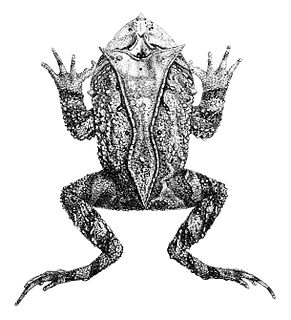
Proceratophrys appendiculata is a species of frog in the family Odontophrynidae. It is endemic to Brazil. Its natural habitats are subtropical or tropical moist lowland forest, subtropical or tropical moist montane forest, and rivers. It is threatened by habitat loss.
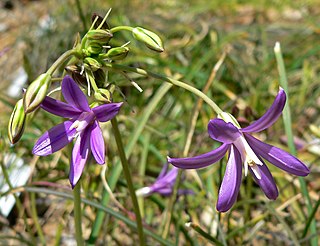
Brodiaea appendiculata, the appendage brodiaea or appendage cluster-lily,) is an uncommon species of plant in the genus Brodiaea.

Oraniopsis is a monotypic genus of flowering plant in the palm family from Queensland, Australia, where the only known species, Oraniopsis appendiculata, grows in mountainous rain forest. Dioecious and extremely slow growing, the name means "similar to Orania" and the Latin epithet translates to "appendaged".
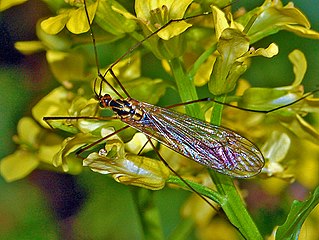
Nephrotoma appendiculata, the spotted crane fly, is a species of crane fly.
Muraena appendiculata is a moray eel found in the southeast Pacific Ocean around Chile. It was described by Alphone Guichenot in 1848, originally under the genus Muraenophis.
Nepenthes appendiculata is a tropical pitcher plant known only from the Hose Mountains of central Sarawak, Borneo, where it grows at elevations of 1450–1700 m above sea level. The species is characterised by an enlarged glandular appendage on the lower lid surface, for which it is named.

Cretalamna is a genus of extinct otodontid shark that lived from the Late Cretaceous to Eocene epoch. It is considered by many to be the ancestor of the largest sharks to have ever lived, Otodus angustidens, and Otodus megalodon.

Colobotheini is a tribe of longhorn beetles of the subfamily Lamiinae.
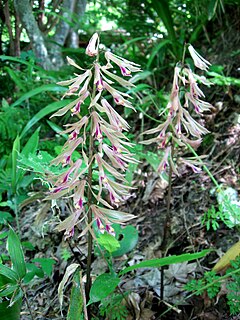
Cremastra appendiculata is an orchid species in the genus Cremastra. It is the type species of its genus.
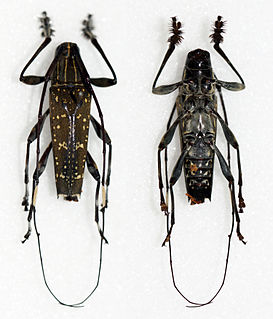
Colobothea is a genus of longhorn beetles of the subfamily Lamiinae.
Colobothea decemmaculata is a species of beetle in the family Cerambycidae. It was described by Bates in 1865. It is known from Brazil and French Guiana.
Colobothea lateralis is a species of beetle in the family Cerambycidae. It was described by Bates in 1865. It is known from Brazil.
Colobothea pimplaea is a species of beetle in the family Cerambycidae. It was described by Bates in 1865. It is known from Brazil, French Guiana, and Peru.
Colobothea schmidti is a species of beetle in the family Cerambycidae. It was described by Bates in 1865. It is known from Argentina and Brazil.
Colobothea discicollis is a species of beetle in the family Cerambycidae. It was described by Gahan in 1889. It is known from Brazil.
Colobothea sinaloensis is a species of beetle in the family Cerambycidae. It was described by Giesbert in 1979. It is known from Mexico.

Xylocopa appendiculata is a species of carpenter bee in the family Apidae.
Podospora appendiculata is a coprophilous fungus that is most commonly found in the dung of lagomorphs, such as hares and rabbits, in temperate to warm climates. A member of the division Ascomycota, P. appendiculata is characterized by ovoid, hair-studded perithecia which can bear a distinctive violaceous colouring and peridia which are coriaceous, or leathery, in texture. Podospora appendiculata has been shown to produce three compounds with antimicrobial properties.
References
- ↑ BioLib.cz - Colobothea appendiculata. Retrieved on 8 September 2014.